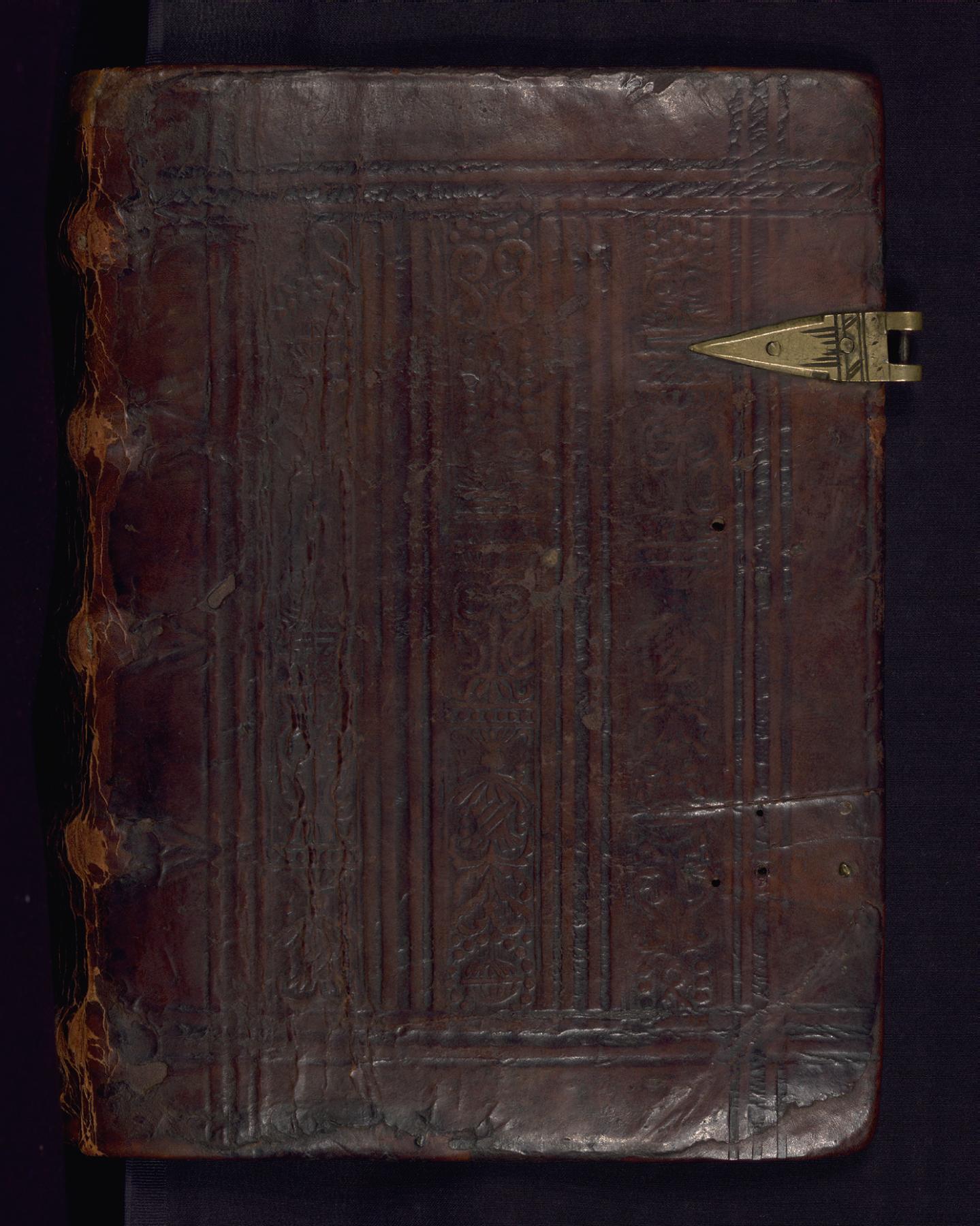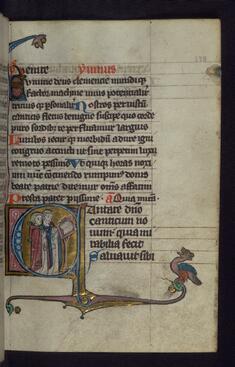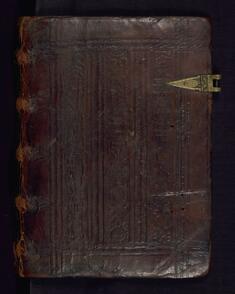Franciscan Liturgical Psalter
(Manuscripts and Rare Books, Medieval Europe )
This Psalter was made for Franciscan use in Cologne in the late thirteenth century. It was owned in the late fifteenth or sixteenth century by the Augustinian nuns of St. Cecilia in Cologne, who added the calendar, the Breviary texts, prayers, and the Collect at the end. The manuscript is written in Latin and in the Ripuarisch dialect spoken in the Cologne region. The style of the historiated initials, as well as that of the bar borders topped with grotesques, closely resembles the style of Walters Ms. W.41 and of the two graduals made for the Franciscans of Cologne in 1299 by Johannes von Valkenburg (Cologne, Diozesanbibliothek, Ms. 1B, and Bonn, Universitatsbibliothek, Ms. 384). It is a well-preserved example of High Gothic illumination in Cologne.
Provenance
Provenance (from the French provenir, 'to come from/forth') is the chronology of the ownership, custody, or location of a historical object. Learn more about provenance at the Walters.
[Made for Franciscan use in Cologne, late thirteenth century, Ripuarisch dialect points to Cologne region]; Augustinian nuns of St. Cecilia, Cologne, late 15th or 16th century; Susanna Koull, 17th century; L.S. Olschki [date and mode of acquisition unknown]; Henry Walters, by purchase [L.S. Olschiki, no. 24][date of acquisition unknown]; Walters Art Museum, 1931, by bequest.
Exhibitions
| 2006 | Schatzkammer: Henry Walters' German Manuscripts. The Walters Art Museum, Baltimore. |
Geographies
Germany
(Place of Origin)
Flanders (Place of Binding)
Measurements
Folio H: 5 1/16 × W: 3 13/16 in. (12.9 × 9.7 cm)
Credit Line
Acquired by Henry Walters
Location in Museum
Not on view
Accession Number
In libraries, galleries, museums, and archives, an accession number is a unique identifier assigned to each object in the collection.
In libraries, galleries, museums, and archives, an accession number is a unique identifier assigned to each object in the collection.
W.111
Do you have additional information?
Related Objects
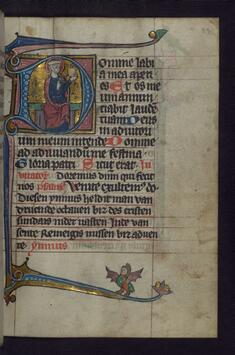
Initial D with Woman Holding an Ointment Jar; Hybrid Creature in Margins

Initial D with David Pointing to His Eye Before the Face of God; Dog in Margins

Initial D with Pilgrim Below the Face of God; Hybrid Animal in Margins
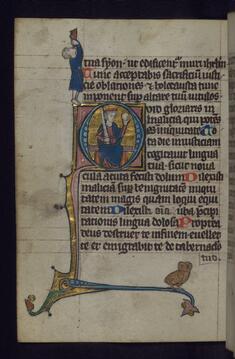
Initial Q with David Enthroned with Sword and Orb; Owl and Man Blowing Horn in Margins
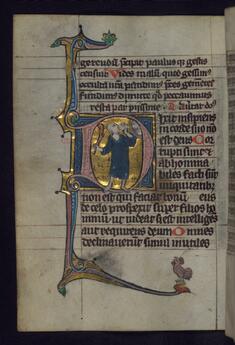
Initial D with Fool Holding a Club and Eating a Loaf of Bread; Rooster in Margins


